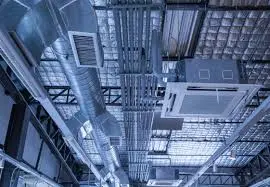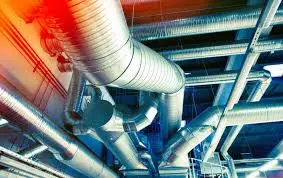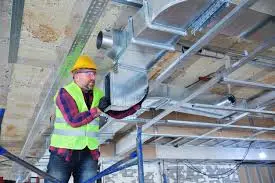Heating, Ventilation, and Air Conditioning (HVAC) systems are essential components of modern buildings, ensuring comfort and air quality. Understanding what HVAC is and how it works can help homeowners and businesses make informed decisions about installation, maintenance, and upgrades. This article provides a comprehensive overview of HVAC systems, including key components, functions, and considerations for new installations.
What is HVAC?

HVAC stands for Heating, Ventilation, and Air Conditioning. These systems regulate the temperature, humidity, and air quality in residential and commercial buildings. By controlling these factors, HVAC systems create a comfortable and healthy indoor environment.
Components of an HVAC System
- Heating Units
- Furnaces
- Heat Pumps
- Boilers
- Ventilation Components
- Air Ducts
- Vents
- Plenums
- Air Conditioning Units
- Central Air Conditioners
- Split Systems
- Ductless Mini-Splits
How HVAC Systems Work

Heating
Heating units, such as furnaces and heat pumps, are responsible for warming the air inside a building. Furnaces typically use natural gas, oil, or electricity to generate heat, which is then distributed through the ductwork. Heat pumps, on the other hand, transfer heat from the outside air or ground into the building.
Types of Heating Systems
- Furnaces: Utilize fuel combustion to generate heat.
- Heat Pumps: Transfer heat from one place to another.
- Boilers: Use water or steam to distribute heat.
Ventilation
Ventilation is crucial for maintaining indoor air quality. It involves the exchange of indoor air with outdoor air, helping to remove pollutants, moisture, and odors. Components like air ducts, vents, and plenums play a vital role in this process.
Importance of Ventilation
- Air Quality: Removes contaminants and improves indoor air quality.
- Humidity Control: Helps regulate indoor humidity levels.
- Comfort: Ensures a continuous supply of fresh air.
Air Conditioning
Air conditioning units cool the air inside a building by removing heat and humidity. Central air conditioners and split systems are common types, with ductless mini-splits becoming increasingly popular for their efficiency and flexibility.
Types of Air Conditioning Systems
- Central Air Conditioners: Use a network of ducts to distribute cool air.
- Split Systems: Have an outdoor compressor and an indoor air handler.
- Ductless Mini-Splits: Offer zoned cooling without ductwork.
Key Components in Detail
Plenum HVAC
A plenum is a crucial component of an HVAC system, serving as a central distribution point for air. It connects to the main ductwork and ensures that heated or cooled air is evenly distributed throughout the building.
HVAC Drain Line
The HVAC drain line removes condensation produced by the air conditioning unit. Regular maintenance of the drain line is essential to prevent clogs and water damage.
Air Scrubbers for HVAC
Air scrubbers are devices that attach to the HVAC system to clean and purify the air. They remove pollutants, allergens, and other contaminants, improving indoor air quality.
Installing a New HVAC System

New HVAC System Cost
The cost of a new HVAC system varies based on factors such as the size of the building, the type of system, and the complexity of the installation. On average, homeowners can expect to spend several thousand dollars on a new system.
HVAC Rebates 2023
In 2023, various rebates and incentives are available for installing energy-efficient HVAC systems. These rebates can significantly reduce the overall cost of a new system. Programs are often provided by utility companies, government agencies, and manufacturers.
Inflation Reduction Act HVAC
The Inflation Reduction Act includes provisions that impact HVAC systems. It aims to make energy-efficient upgrades more affordable for consumers, promoting the use of advanced technologies in heating and cooling.
Also Check Out: TWO-PIPE HEATING SYSTEM FOR A PRIVATE HOUSE
Advanced HVAC Technologies
Solar HVAC
Solar HVAC systems use solar energy to provide heating and cooling. These systems are environmentally friendly and can reduce energy costs over time. Solar HVAC systems are particularly beneficial in regions with abundant sunlight.
HVACdirect
HVACdirect is an online retailer that offers a wide range of HVAC products and systems. They provide options for both residential and commercial applications, often at competitive prices.
Maintenance and Upkeep
Regular maintenance is essential to keep an HVAC system running efficiently. This includes tasks such as:
- Changing Filters: Regularly replacing air filters to maintain airflow and air quality.
- Cleaning Ducts: Ensuring that air ducts are free from dust and debris.
- Inspecting Components: Checking the condition of key components like the plenum, drain line, and air handler.
Conclusion
Understanding HVAC systems is crucial for maintaining a comfortable and healthy indoor environment. These systems play a vital role in regulating temperature, humidity, and air quality. Whether you are considering a new installation or looking to maintain an existing system, knowledge about HVAC components and functions will help you make informed decisions. From heating and cooling to ventilation and air purification, HVAC systems are integral to modern living.
